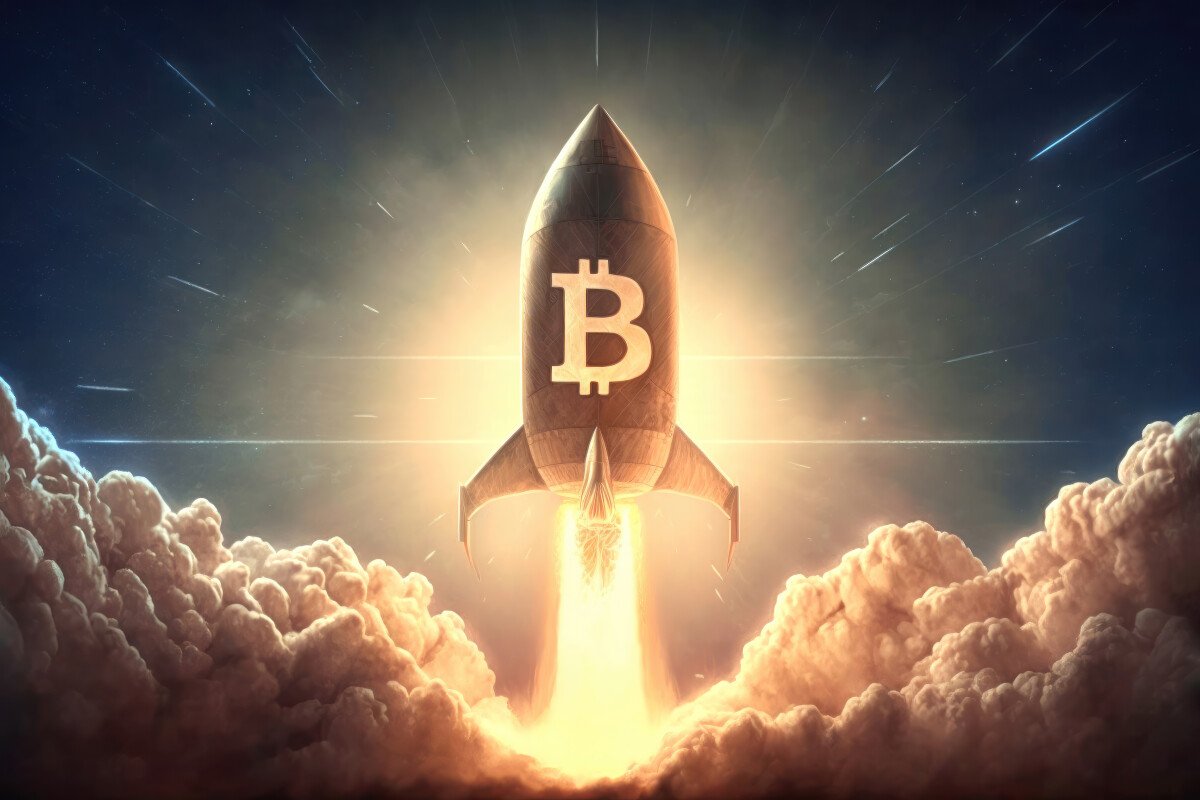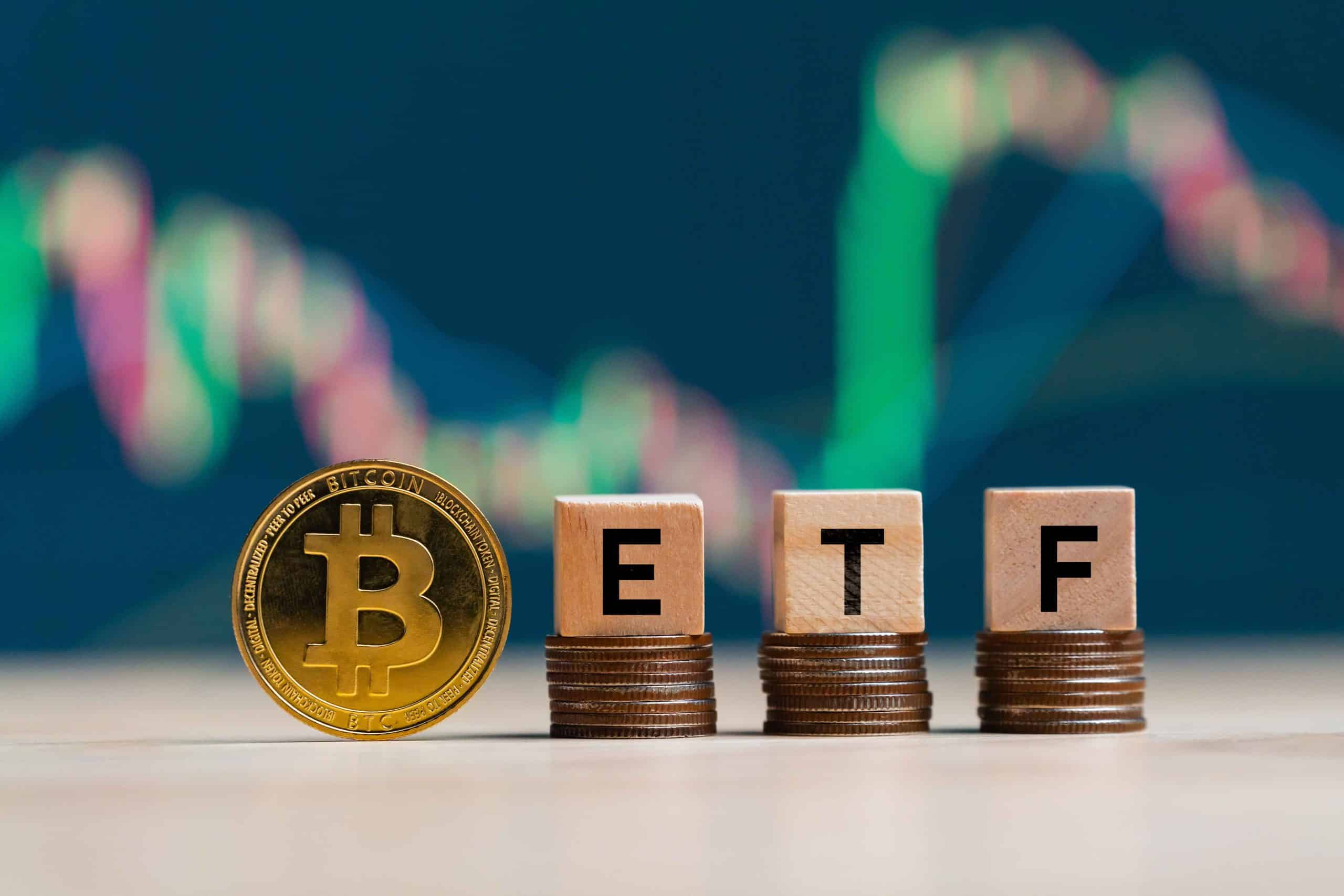Will the rise of the Bitcoin ecosystem threaten the value of Ethereum?
Could the Bitcoin ecosystem's growth jeopardize the value of Ethereum?Author | Michael Nadeau &Token Terminal
Translation | Plain Language Blockchain
In recent times, the rapid rise of the Bitcoin ecosystem has caused concerns among some in the crypto community as certain paths may overlap with the Ethereum ecosystem. But does the rise of the Bitcoin ecosystem really weaken Ethereum? Not necessarily, as Ethereum has its own unique value propositions…
- Placeholder Partner Why will modularity bring about the golden age of Web3 innovation?
- SBF gradually integrates into prison life providing cryptocurrency investment advice to prison guards, meeting the demand for medicine and food
- Blockchain games are rejuvenating, how does Gala Games stand out?
It’s undeniable that the development of the internet has brought us endless richness. However, it lacks two key elements:
-
Internet users don’t have digital property rights.
-
The internet lacks a trusted, neutral, shared, secure, permissionless global accounting system – to record the status of users and facilitate global trade on a shared ledger.
And these happen to be the core value propositions of blockchain, the revolution of the internet is on its way.
01, Ethereum’s Construction Reflects the Construction of the Internet
Bitcoin is the first public blockchain. In the early days, if you wanted to utilize this new technology breakthrough to create a new application, you had to launch your own blockchain. For example, Namecoin (a peer-to-peer naming system) was initially a fork of the Bitcoin network. This era of public blockchains was similar to the early days of the internet, where you had to host your own servers to build websites.
Ethereum was founded in 2015 and it was created as the “geographical city of public blockchains”. Ethereum enables developers to build blockchain-based applications using shared infrastructure, and it’s cheaper and more efficient.
However, building applications for specific use cases requires great flexibility. With the introduction of Layer 2 (L2) and application-specific blockchains, people started building execution services “on top” of Ethereum, with Ethereum serving as the settlement infrastructure at the base layer.
So Ethereum is becoming a “network of networks”. Just like the internet. L2 looks very similar to the services provided by Taobao – achieving flexibility and scalability while maintaining shared infrastructure.
In addition, L2’s enhanced scalability is being developed along with zero-knowledge proofs, which brings privacy to public blockchains – just like how HTTPS brings encryption to the internet, enabling e-commerce.
02, Ethereum’s Business Model
Investors should consider the Ethereum network as two separate entities:
ETH – the native token that powers the network and creates economic incentives for its decentralized operation.
Ethereum – the computational network and accounting system that serves as the foundational layer infrastructure for other companies to build applications “on top”.
1) Data Overview
Non-zero addresses: Over the past 8 years, the cumulative total has grown exponentially. As of September 30th, 2023, the growth exceeded 107 million, a 26% increase compared to a year ago, and a 4.9% increase compared to the previous quarter.
Active Addresses: In the third quarter, the average daily active addresses for Ethereum were around 400,000, a decrease of 4% compared to the previous quarter. Similar decreases were seen during last year’s cryptocurrency downturn, but as the market conditions improve, new users are starting to pour in.
Average Daily Trading Volume: In the third quarter, the average daily trading volume for Ethereum experienced slight growth. The network demand continues to exceed supply, and as the network scales, Layer 2 solutions (such as Optimism, Arbitrum, and Base) are handling a larger proportion of transactions. The transaction volume on Layer 2 has grown over 3438% in the past few years, highlighting the role of Moore’s Law in the Ethereum network.
Average Number of Developers: The average number of core developers working on Ethereum remained stable in the third quarter. According to Electric Capital’s Developer Report, the Ethereum ecosystem has over 5,946 active developers, which is a 51% increase over the past two years and more than three times the closest competitor. Please note that these numbers may be underestimated as they do not reflect any contributions to proprietary crypto businesses built on Ethereum.
Average Daily Gas Usage: Average gas usage, as an indicator of block space requirements on Ethereum L1, has slightly increased recently, similar to the daily trading volume. Since the inception of the network, gas limits have increased by five times, with each increase aimed at meeting block space demands. This relationship is expected to continue as L2 solutions further develop, expanding Ethereum’s computational resources.
Average Transaction Fees: The average transaction fee for Ethereum in the third quarter was $4.85, a 46% decrease compared to the previous quarter. This indicates that during periods of high demand, insufficient block space supply led to a surge in fees. However, the network has been expanding through L2 solutions and sidechains (such as Arbitrum, Optimism, Base, and Polygon), allowing transaction costs for L2 applications to range from 1 cent to 13 cents. The implementation of EIP-4844 is expected to further reduce fees in the fourth quarter.
ETH Staking: The growth of ETH staking is crucial for the healthy development of the Ethereum network. This metric tracks the percentage of circulating ETH that is staked in the network. With the rapid increase in staking participation, ETH holders are gradually showing long-term prospects. Currently, ETH is the only public blockchain network that achieves a positive real yield (3.6%).
ETH Price: The cryptocurrency market displays strong reflexivity, with ETH prices closely correlated to on-chain indicators. It has exhibited significant volatility every year since 2015, including the price bottom of $83.79 in 2018 and a peak increase of 57x in 2021. The following sections will provide a more in-depth valuation analysis.
Daily Trading Volume: The trading volume in the third quarter continued to decline, with a 56% decrease compared to the same period last year. Market-making businesses such as Jane Street and Jump Trading in the US market have reduced their operations due to regulatory uncertainty. Additionally, as the cryptocurrency winter continues, retail investors have lost interest in the field.
TVL (USD): The Total Value Locked (TVL) in Ethereum DeFi applications is $3.9 billion, which is a 12% decrease from last quarter, but still 5.8 times higher than the closest competitor. Another perspective on TVL is the “assets under management,” with ETH holdings in smart contracts reaching a historical high of 32%, indicating the health of asset management.
Unit Economic Efficiency: The daily income per active address increased by 87% in the second quarter compared to the previous quarter, but decreased by 24.9% compared to the same period in 2022. This shows that the growth in daily expenses of active users is consistent with the increase in transaction fees, indicating that users are willing to pay higher fees during network congestion due to the time value and sensitivity of on-chain transactions.
We can see a significant decrease in user fees through L2 solutions. When this happens, we can expect exponential growth in transaction volume.
2) Business Model
Although Ethereum’s economy and market structure are decentralized, its business model is simple, charging a small amount for computation/settlement fees. As applications expand, the network becomes more profitable. The following analysis will provide a detailed overview of Ethereum’s financial situation.
Total Revenue: Ethereum’s transaction fees represent the total fees paid by users on the network. In the future, applications will represent user-paid fees, covering operations such as peer-to-peer payments, DeFi lending, exchange transactions, gaming experiences, NFT minting, and any other operations utilizing the Ethereum blockchain. Applications using layer 2 solutions will ultimately settle data for Ethereum’s base layer transactions. Although revenue in the third quarter decreased by 47% compared to the second quarter, the network still remains profitable.
Revenue Costs: This line item represents the amount paid to the supplier (validators). Validators provide services to the network by approving transactions and ensuring network security. 80% of user fees were burned this quarter, while the remaining 20% represents priority fees and MEV costs.
Token Incentives: Token incentives represent block subsidies paid by the network to validators. After the “merge” in 2022, Ethereum’s security fees decreased significantly by 87%, putting the network into a profitable state and compensating validators and passive holders for user fees.
There are different views on token incentives, with the common belief that it is a “fee” paid by the network to validators. However, its essence is different from the traditional notion of fees because validators do not directly pay this reward. Quantifying this concept accurately may be challenging in the current situation.
Block Space Profitability: From an on-chain perspective, Ethereum’s net income is $78.7 million this quarter, an 81% decrease from the second quarter. Although it has decreased, Ethereum remains the only profitable public blockchain because user fees exceed the network’s token incentive costs.
03, Relative Valuation: “GDP” Analysis
A method to compare Ethereum’s valuation with other L1 networks is through “GDP” analysis. In this case, we quantify and predict the network’s economic opportunities or GDP. The GDP of a blockchain network is the sum of all income generated by applications built on top of L1.
From this perspective, we see L1 blockchain as a “country” rather than a network or company. The strength of a country’s currency depends on its economy/GDP, property rights and legal system (the country’s infrastructure), as well as the demand for the currency (taxation, purchase of goods, consumption of services, storage, etc.).
In a public blockchain network, the native token of L1 is the currency of the network. The property rights and legal system within the public blockchain network are derived from its consensus mechanism, decentralization, security, community, and value. Similar to a country, the strength of the currency is related to the L1 infrastructure’s support for the economy/GDP and the demand for tokens to access services within the network.
According to data extracted from Token Terminal, Ethereum’s “GDP” in the past year was 2.6 billion US dollars. We broke down the annual revenue by industry as follows:
Ethereum currently leads its competitors in terms of “GDP” and TVL ($39 billion). As the network scales through L2 solutions, we expect exponential growth in economic opportunities (or GDP) through increased throughput and zero-knowledge privacy solutions (“bandwidth” + “privacy”) in the coming years.
Comparing ETH demand with USD demand
To expand the concept of ETH as a currency, we analyzed the strength of a currency relative to other currencies. The US dollar has established a strong position globally due to structural demand such as oil trade demand and taxation, demonstrating the relative strength of the currency. The US dollar itself has no utility, but we need them to obtain what we want.
We see the same pattern in Ethereum. To access the network, one must pay for computational resources with ETH. If users want to send stablecoins across borders, they need some ETH. To use DeFi services, ETH is required for payment. To play blockchain games, users must have some ETH. To mint or purchase NFTs, it’s best to have some ETH. Additionally, if you want to protect the Ethereum network and earn rewards, you need to hold some ETH.
We even see ETH being used now to provide economic security for additional layers of the technology stack through Eigen Layer – an emerging “rehypothecation” solution that creates more demand for ETH.
In summary, we see similarities between ETH and traditional currencies like the US dollar. If Ethereum can continue to expand its global network effects, considering the requirements to access services within the network, we believe there will be a strong demand for individuals and businesses to hold this asset.
04. The arrival of the next cycle
There are three main driving factors of the crypto cycle:
-
Global liquidity/business cycle: interest rates and monetary policy
-
Innovation cycle: development of infrastructure and applications
-
Bitcoin halving: the date when the new issuance of Bitcoin is halved (in this cycle, we go from issuing 900 bitcoins per day to 450)
Using Bitcoin as a benchmark, we observe significant consistency in terms of time and price trends over the past three cycles:
Percentage pullback from each cycle peak: approximately 80%
Time from cycle bottom: 1 year from peak
Time to reclaim historical highs: 2 years
Furthermore, each cycle closely aligns with the cyclical changes in the business cycle measured by the ISM Manufacturing PMI, which also aligns with global liquidity cycles.
Looking ahead, we believe that with our preparations for the next Bitcoin halving in April 2024, all three factors may align once again.
05. On-chain Gas Consumption by Year
The above Gas consumption data illustrates the development of Ethereum as a computational infrastructure. It is worth noting that we can see the introduction of DeFi in 2017, stablecoins as payments and collateral in 2019, NFTs in 2020, and bridges in 2021, all of which helped alleviate the congestion on Ethereum at the time.
In the future, we expect most of Ethereum’s Gas consumption to come from L2 scaling solutions, which will drive explosive growth in new use cases as costs decrease.
06. Competition between Modular and Integrated Blockchains
As we know, Ethereum, as a “network of networks” or “modular” technology stack, is evolving and maturing, with settlement (L1) and execution (L2) separated but interconnected.
In contrast, Solana (ranked third) operates within an overall or integrated architecture. In this architecture, settlement and execution are combined.
We believe both Ethereum and Solana have vibrant opportunities, with some comparing them to Android and iOS. In this context, Ethereum is more like Android, prioritizing modularity and running on many different devices manufactured by hundreds of global manufacturers. The flexibility and expressiveness of Android enable hardware developers to create any product, from smartphones to TVs, without the investment needed to build a custom operating system.
Solana, on the other hand, is more like iOS, as it can provide a more integrated experience for users and developers, seamlessly connecting the complexity required by different L2 networks. As a unified network, Solana has lower transaction costs and higher throughput than Ethereum and the EVM operating system. This allows developers to focus on delivering applications with a single high-performance platform without dealing with the complexities associated with transaction speeds or interoperability between different networks. It can also eliminate the hassle of bridging assets or dealing with inconsistent wallets, making the user experience more seamless.
However, we believe there is still room for alternative architectures like Solana. We believe both can coexist.
07. Catalysts and Driving Factors for Ethereum Adoption
In the short term (2-3 years), we see scalability, privacy solutions, and regulatory clarity driving adoption. Looking into the long term, Ethereum has several favorable factors supporting network adoption over the next decade:
1) Open source technology: The Ethereum network is the center of the web3 movement and as a leader in open source technology, it has created new standards. By leveraging interoperability and decentralization, Ethereum is driving the next generation of the internet and benefiting from a wide network of talent and rapid iteration.
2) Demographics: The largest demographic shifts in the world are currently shaping the future of the United States and other countries. As the last generation of the baby boomers gradually retires, the younger generation’s ideas and career paths are changing the overall landscape.
3) Global distribution of wallets: With improvements in web3 products and services, we believe adoption rates may expand nonlinearly due to the open nature of the technology and the fact that anyone with a smartphone can participate. Currently, an estimated 83% of the global population owns a smartphone (compared to 49% six years ago).
4) Token and value distribution: Cryptonetworks, such as Ethereum, are laying the foundation for new business models. Token distribution mechanisms guide value allocation, giving more value to users, creators, and suppliers, and achieving more equitable ownership distribution.
5) Internet culture: We haven’t forgotten that Bitcoin has no CEO, no boardroom meetings, no sales or marketing teams, and no “roadmap.” Yet, Bitcoin reached a valuation of $1 trillion faster than any company in history. This also brings potential faith to Ethereum and other web3 networks.
6) Lack of trust in institutions: According to Gallup polls, the United States currently has a lack of trust in global institutions established after World War II, such as organized religion, the Supreme Court, public schools, newspapers, Congress, television news, the President, the police, the World Bank, the International Monetary Fund, NATO, the European Union, and the World Trade Organization. History shows that massive changes can occur in just a decade after several decades of relative stability.
7) Macroeconomics: History also shows the existence of long-term debt cycles, and we are currently in the late stage, indicating the possibility of geopolitical turbulence. Such periods can lead to rapid societal changes and present new opportunities for web3 and the Ethereum network.
8) L2 scaling solutions: Ethereum’s settlement network is still slow and expensive, but the growth of L2 scaling networks like Arbitrum, Optimism, Base, and Polygon, along with the upcoming EIP-4844, promises significant increases in transaction throughput. This will pave the way for wider adoption of Ethereum and provide a better user experience, potentially driving its user base to reach one billion in the coming years.
9) Financial innovation: The internet has disrupted almost every imaginable business model, but the business models of the financial services industry have remained relatively unchanged. Public blockchains are seen as a catalyst for financial system reform, especially with privacy-focused L2 solutions like Nightfall launched by Ernst & Young on Ethereum. It is expected to be a catalyst for institutions migrating to public blockchains.
10) New native internet business models: As we have introduced in this article, Ethereum has achieved many new native internet business models through the introduction of user-controlled data, smart contracts, peer-to-peer interaction, and global accounting ledger.
08, Conclusion
In 2021, the total market value of cryptocurrencies reached $3 trillion. Despite fluctuations in the field, we believe that cryptocurrencies are in a long-term, exponential adoption cycle. Therefore, if the industry follows past growth patterns, the total market value could reach $10 trillion in the next adoption cycle. Based on simple logic and historical data, over 50% of this figure is likely to be attributed to Bitcoin and Ethereum (currently accounting for 68.1% of the cryptocurrency market). If we assume Ethereum captures $1-2.5 trillion, the price could range from $8300 to $20800 in the next adoption cycle.
After all, Ethereum has demonstrated strong network effects, clear income generation/value distribution, and a well-defined high-quality token economy post-merge. The core team has shown the ability to execute its roadmap, and the Ethereum ecosystem/community is the most powerful we have seen in smart contract platforms.
We believe ETH represents the best risk-adjusted return potential in today’s cryptocurrency ecosystem. Investors can view ETH as an index fund representing bullish options on web3. The S&P 500 index rotating in new companies. Ethereum rotating in new L2s, applications, and protocols. Given Ethereum’s strong network effects, we believe the value of ETH may increase with the adoption of web3, similar to how Google, Amazon, and Apple grew with the adoption of the internet.
This article is excerpted from “The Ethereum Investment Framework”
Original Link: https://tokenterminal.com/resources/crypto-research/ethereum-investment-framework#1-executive-summary
Original authors: Michael Nadeau & Token Terminal
Translation by: Huohuo
We will continue to update Blocking; if you have any questions or suggestions, please contact us!
Was this article helpful?
93 out of 132 found this helpful
Related articles
- DeFi Historical Research The Golden Age of DeFi Initiated by Uniswap
- Quick review of the liquidity pledging pattern of the Ethereum ecosystem Decreasing centralization in Lido, increasing protocol diversity
- In the next ten years, there will be no second Binance in Crypto.
- It’s a Wild Ride in the Crypto Regulatory Space
- Milei’s Bold Promise to Shut Down Argentina’s Central Bank Can He Really Pull It Off?
- How to simply understand the scalability new solution Plasma + ZK-SNARKs?
- Why has Blast become the biggest catfish of Layer2 this year, with over $200 million TVL captured in just 2 days?






